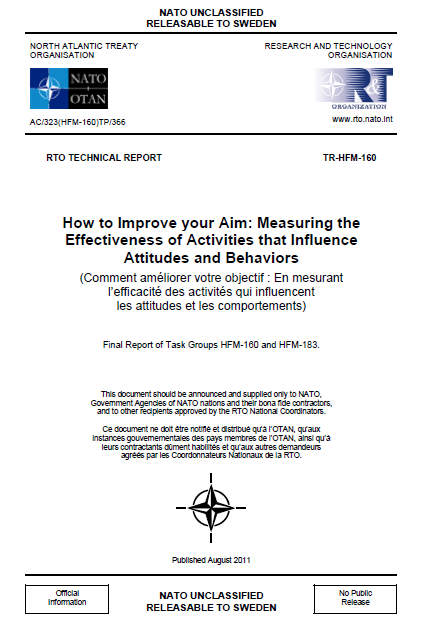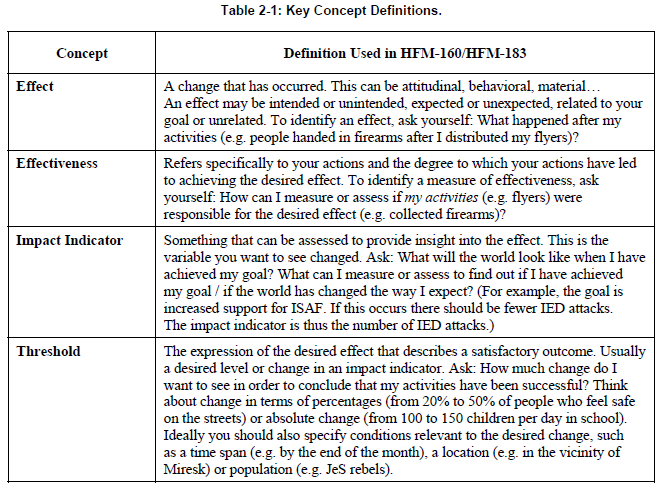How to Improve your Aim: Measuring the Effectiveness of Activities that Influence Attitudes and Behaviors
- 100 pages
- This document should be announced and supplied only to NATO, Government Agencies of NATO nations and their bona fide contractors, and to other recipients approved by the RTO National Coordinators.
- August 2011
The emphasis of military operations is shifting more and more towards non-kinetic activities, such as Psychological Operations and Information Operations, which are geared towards influencing attitudes and behaviors of specific target audiences. Though many such activities are undertaken, there is little systematic evaluation of the effects they bring about and their effectiveness. As a result, it is not well known what these operations contribute to the overall operation and to what degree they are achieving their goals. The purpose of the Task Group HFM-160 was to develop a systematic approach to the Measurement Of Effectiveness (MOE) of influence operations.
In our approach, we consider MOE to be a process rather than a “thing”; there is no definitive list of MOE or even an overview of best practices. All MOE are custom made for a specific situation. Our approach is a way of thinking about how to assess the effects of what you have done and how effective you have been. MOE is most intuitively suited to influence operations, such as PSYOPS. However, any operation will affect attitudes and behaviors – especially kinetic operations. For this reason, our approach generalizes across the whole operations spectrum: from PSYOPS and CIMIC to the most assertive kinetic activity. Our work takes NATO PSYOPS doctrine (AJP 3.10.1) as a starting point and augments it specifically for MOE. There where we feel existing definitions and procedures are insufficient, we take the liberty to develop our own. Our approach should be seen as a starting point. It is not possible to become an MOE expert in a couple of days after reading about our approach. Furthermore, some activities in the approach, such as statistical analysis, should be supported by knowledgeable individuals; just knowing that something should be done is not the same as being able to do it. The approach was designed for operational and tactical levels working with, commissioning, developing or interpreting MOE for any type of influence activity. They should gain an understanding of the complexity of attitudinal and behavioral MOE, the basics of how to embed MOE in operations and the basics of how to develop MOE such that it yields the desired – or at least useful – information.
The most important key concepts in the HFM-160 approach to MOE are: effects and effectiveness. Effects refer to changes in the environment, potentially brought about by your actions, though other forces may lead to the observed effects. Effectiveness refers to the degree to which your actions are responsible for bringing about the desired effects. Effects can be seen as a goal in and of themselves; what causes the effects is relatively unimportant as long as the effects are manifested. In terms of effectiveness, how the change comes about is key. It is not enough that change has occurred; you must gain insight into the cause of this change: either your actions or something else.
…
2.2.1 Effects
Every operation conducted is geared towards realizing a particular effect. In terms of kinetic activities, this may be to diminish the adversary’s fire power or limit their mobility. In operations geared towards attitudinal and behavioral change, it may be to create support within the local population or something more tangible such as collecting firearms in civilians’ possession. In all cases, the goal is to change something through your actions. Any change resulting from any operation may be identified as an effect. Though hopefully the effect you want is what changes, an effect may also be unwanted or unintended. Effects may be positive or negative. They may also be material, attitudinal or behavioral.
…



